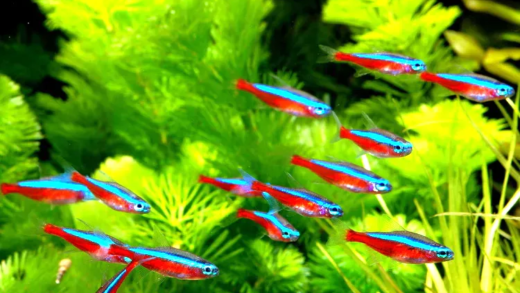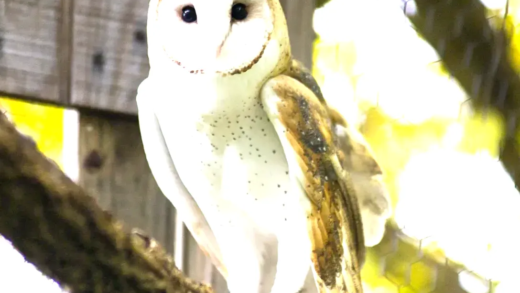Rhesus macaques in Silver Springs State Park are a unique attraction, drawing visitors with their playful behaviors and social dynamics. While many enjoy observing these monkeys, safety remains a concern due to their unpredictable nature. Understanding their behaviors and following park guidelines ensures a positive experience for both guests and wildlife.
Meet the Rhesus Macaques: Discover the Species and Their Characteristics
Silver Springs monkeys are actually Rhesus macaques, a species known for their adaptability and intelligence. These monkeys are medium-sized, with a distinctively short tail, and typically weigh between 10 to 25 pounds. They have a characteristic brown or gray fur with a pink face and a playful demeanor. Rhesus macaques are highly social creatures, often seen in groups, and they communicate through a variety of vocalizations and body language.
In Silver Springs State Park, these monkeys thrive in their unique ecosystem. They are known for their curious nature, often approaching visitors and exploring their surroundings. Their diet mainly consists of fruits, seeds, and plants, which they skillfully forage from the park’s lush environment. Rhesus macaques are also known for their intelligence, using tools and solving problems to obtain food.
A Monkey’s Journey: How Rhesus Macaques Ended Up in Florida
The history of the Rhesus macaques in Florida is quite fascinating. In the 1930s, the monkeys were introduced to Silver Springs as part of a tourist attraction. The idea was to create an exotic experience for visitors, showcasing these lively creatures in a natural setting. Over the decades, some of these monkeys escaped or were released into the wild, leading to the establishment of a feral population.
Today, the Rhesus macaques in Silver Springs are a unique part of Florida’s wildlife. Their presence has sparked interest in studying their adaptation to the local environment and their interaction with native species. This historical introduction has raised questions about the long-term impact of non-native species on local ecosystems.
Wild and Free: Are the Monkeys Truly Living in the Wild?
While the Rhesus macaques in Silver Springs are often seen as wild, their reality is a bit more complex. These monkeys have adapted to their surroundings, but they are not entirely free in the traditional sense. They rely on the park’s resources, such as food provided by visitors and the natural habitat created by park management.
The living conditions for these monkeys can be both beneficial and detrimental. On one hand, the park provides a safe environment with ample food and shelter. On the other hand, their dependence on human interaction can lead to problems, such as habituation and potential conflicts with visitors. Understanding their living conditions helps inform conservation efforts and visitor guidelines, ensuring the safety of both the monkeys and park guests.
Home Sweet Home: Habitat Preferences of Rhesus Macaques
Rhesus macaques Silver Springs thrive in a variety of habitats, but they particularly favor areas with abundant food sources and shelter. In Silver Springs State Park, these monkeys are often found near water bodies, which provide not only hydration but also a rich supply of aquatic plants and insects. The lush greenery of the park is ideal for foraging and climbing, allowing them to easily navigate their environment.
Key habitat features include:
- Dense Vegetation: Rhesus macaques prefer areas with thick trees and shrubs, which offer protection from predators and a place to build nests.
- Proximity to Water: Access to rivers and springs is crucial, as it supports their diet and social behaviors.
- Human Interaction: Surprisingly, these monkeys often adapt to areas frequented by people, where they can find food scraps and engage with visitors.
Understanding the habitat preferences of Silver Springs monkeys is vital for conservation efforts. Protecting these areas ensures the monkeys have the resources they need to thrive while minimizing conflicts with visitors.
A Mixed Bag: The Impact of Monkeys on the Local Ecosystem
The presence of Silver Springs monkeys has a complex impact on the local ecosystem. As non-native species, Rhesus macaques can influence both flora and fauna in significant ways. Their foraging habits can lead to overconsumption of certain plants, which may disrupt the balance of the local vegetation.
Key impacts include:
- Plant Consumption: Rhesus macaques feed on fruits, seeds, and leaves, potentially outcompeting native species for these resources.
- Seed Dispersal: Conversely, they also play a role in seed dispersal, helping some plants to propagate, which can benefit the ecosystem.
- Interactions with Native Species: Their presence can alter the behavior of local wildlife, as some species may avoid areas where monkeys are active.
While the monkeys contribute to biodiversity, their impact raises questions about the balance between non-native species and native ecosystems. Ongoing studies aim to understand these dynamics better.
Conservation in Action: Protecting the Silver Springs Monkeys
Conservation efforts for Silver Springs monkeys are crucial to ensure their survival and the health of the ecosystem. Various initiatives focus on habitat protection, education, and monitoring of monkey populations. Organizations work tirelessly to manage human interactions with these animals, promoting responsible behavior among park visitors.
Key conservation strategies include:
- Habitat Preservation: Protecting natural areas within Silver Springs State Park helps maintain the monkeys’ environment.
- Public Education: Informing visitors about how to interact safely with the monkeys reduces the risk of habituation and conflict.
- Research Programs: Ongoing studies help monitor the health and behavior of Rhesus macaques, informing future conservation strategies.
Through these efforts, the goal is to maintain a healthy population of Rhesus macaques while ensuring that their presence does not negatively impact the local ecosystem. Conservation is a continuous journey, requiring collaboration among researchers, park officials, and the public.
Monkey Business: Visitor Reactions to Seeing Monkeys in the Wild
Silver Springs monkeys evoke a range of reactions from visitors. Many people are thrilled to see these Rhesus macaques in their natural habitat. Their playful antics and social interactions often leave guests amused and delighted. Visitors frequently share their experiences, highlighting how close they can get to the monkeys, which adds to the excitement of the encounter.
However, not all reactions are positive. Some visitors express concerns about the monkeys’ behavior, especially when they approach people looking for food. This behavior can make some individuals uncomfortable, leading to discussions about safety and responsible interactions with wildlife.
Visitor feedback often emphasizes the importance of following park guidelines to ensure both human and monkey safety. Many suggest that education on how to behave around the monkeys could enhance the experience. This mixture of awe and caution reflects a growing awareness of the need to respect wildlife while enjoying nature.
Monkey See, Monkey Do: Interesting Behaviors of Rhesus Macaques
Rhesus macaques Silver Springs display a variety of fascinating behaviors that reflect their intelligence and social nature. One notable behavior is their complex social structure. These monkeys live in troops, often led by dominant males. They exhibit strong social bonds through grooming, which helps reinforce relationships within the group.
Additionally, Rhesus macaques are known for their problem-solving skills. For instance, they use tools to access food, such as using sticks to extract insects from tree bark. Their adaptability is evident in how they interact with the environment, showcasing their ability to learn and innovate.
Another interesting behavior is their communication. Rhesus macaques utilize a range of vocalizations and body language to convey messages, from warning calls to playful chirps. Observing these interactions provides insight into their social dynamics and intelligence.
Safety First: Is It Safe to Observe Monkeys in Their Habitat?
Observing Silver Springs monkeys can be a thrilling experience, but safety is paramount. While Rhesus macaques are generally not aggressive, they can exhibit unpredictable behavior, especially when they feel threatened or cornered. Visitors should always maintain a safe distance, ideally observing from designated areas.
It is crucial not to feed the monkeys, as this can lead to habituation and aggressive behavior when they seek food from humans. Instead, park officials recommend enjoying their natural behaviors from afar and using binoculars for a closer look.
Additionally, it’s essential to be aware of one’s belongings. Rhesus macaques are curious creatures and may snatch items like bags or cameras if left unattended. By following park guidelines and being cautious, visitors can safely enjoy watching these remarkable animals in their habitat.





Comments are closed.